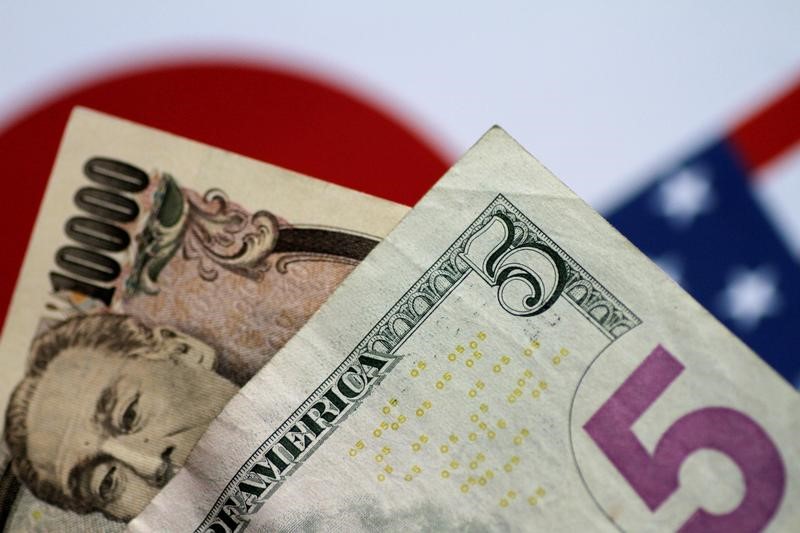Investing.com–Most Asian currencies firmed on Thursday as increased expectations of Federal Reserve rate cuts dented the dollar, while a vulnerable yen kept traders wary of possible government intervention.
But gains in Asian currencies were tempered by hawkish signals from the June Fed meeting minutes, while anticipation of key payroll data on Friday also kept sentiment cautious.
The Japanese yen is gaining some ground, but concerns about interventions remain
The Japanese yen benefited somewhat from dollar weakness, with the pair falling 0.2% after nearly breaching the 162 level on Wednesday.
The pair was trading well above 160, the level that last prompted government intervention in May. With Japanese officials reiterating their pledge to defend the yen, traders remained wary of any potential intervention in the coming days.
Traders speculated that the government would take advantage of low trading volumes during the US Fourth of July market holiday to intervene. The government’s intervention in May had taken place during a Japanese market holiday.
The dollar falls on weak labor data, bets on interest rate cuts increase
The and both fell about 0.1% in Asian trading on Thursday, extending sharp declines overnight.
Softer-than-expected data and a weak purchasing managers’ index point to stepped-up betting on a cooling U.S. economy, which traders are betting will prompt the Fed to cut rates sooner.
Soft labor data also fueled bets on a weak reading on Friday.
Traders have increased their expectations that the Fed will cut interest rates by 25 basis points in September. Stock traders estimate a nearly 66% chance of a rate cut in September, up from 59% a day ago.
Still, the Fed’s June meeting showed that policymakers were still not convinced that inflation was falling enough to make rate cuts feasible. Some officials still saw the need for higher interest rates to reduce inflation.
Several Fed officials, most notably Chairman Jerome Powell, also warned this week that while the bank had made some progress in the fight against inflation, it still lacked the confidence to start cutting rates.
Still, most Asian currencies advanced against a softer dollar. The Australian dollar pair rose 0.2% even as data showed the country’s trade balance shrank more than expected in May due to weak exports.
The Chinese yuan pair was flat and remained near a seven-month high as confidence in the Chinese economy declined.
The South Korean won pair fell 0.4%, while the Singapore dollar pair fell 0.1%.
The Indian rupee pair held steady after closing close to record highs this week.


